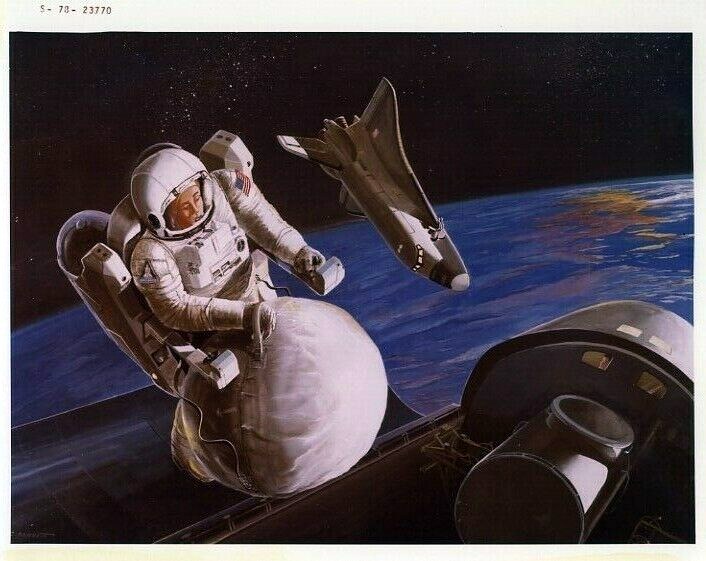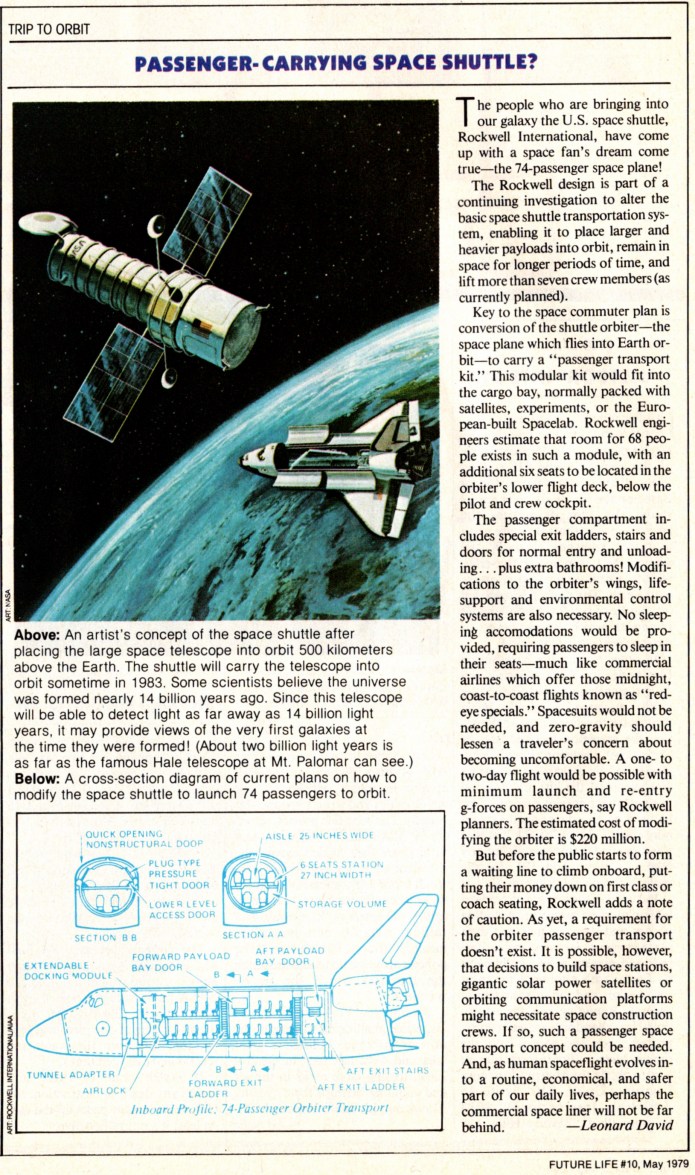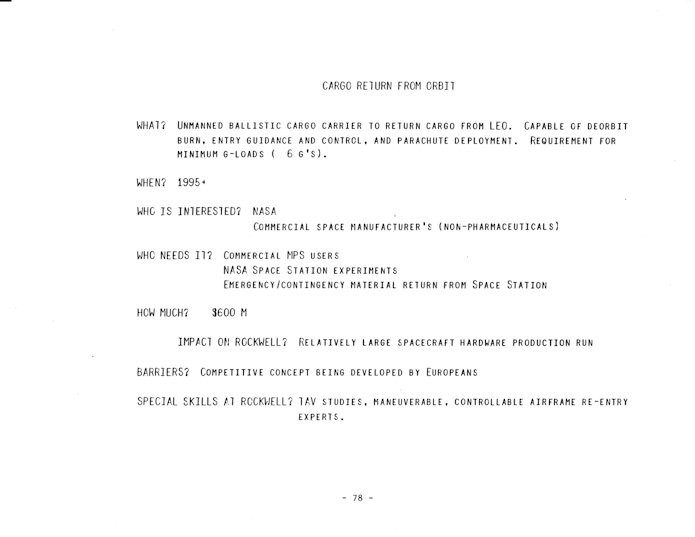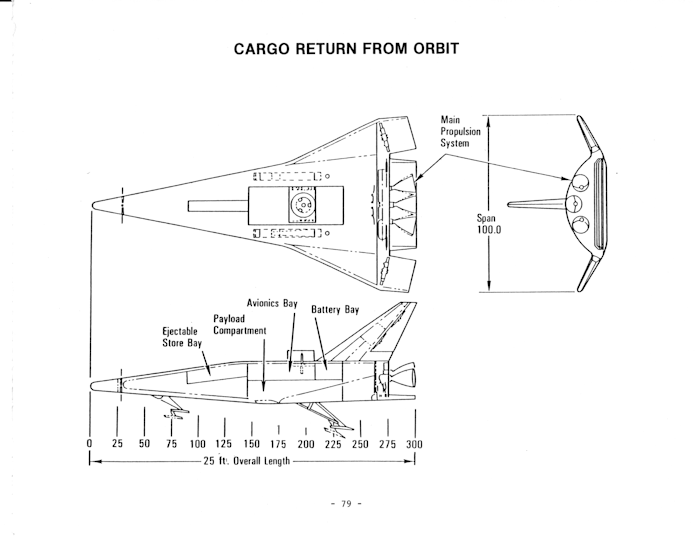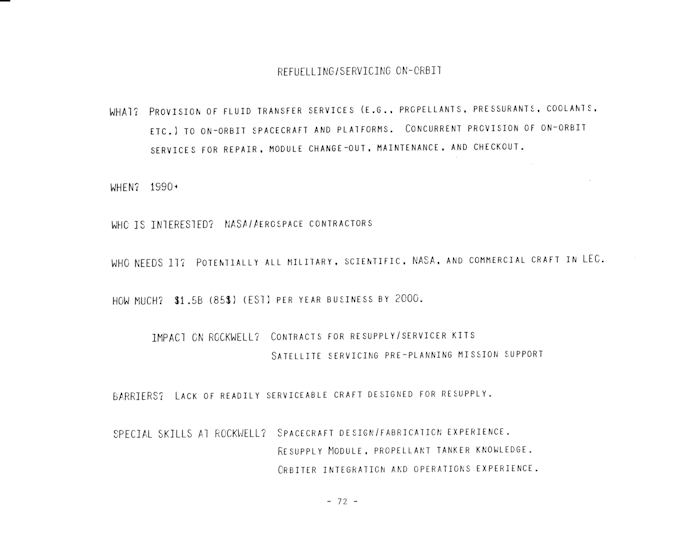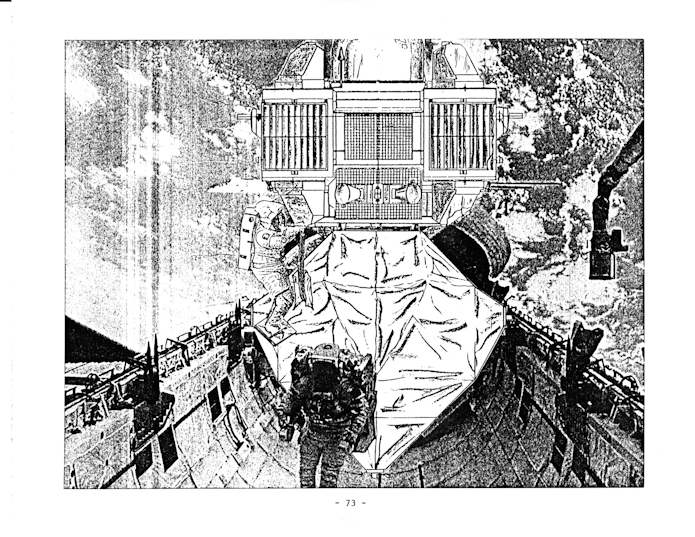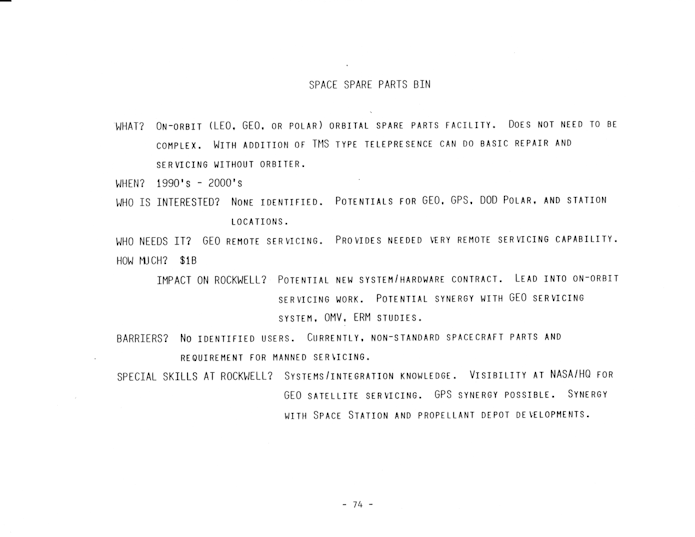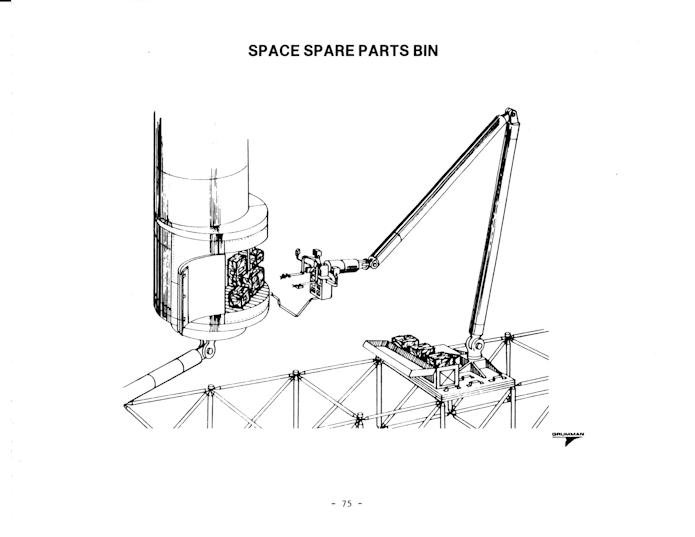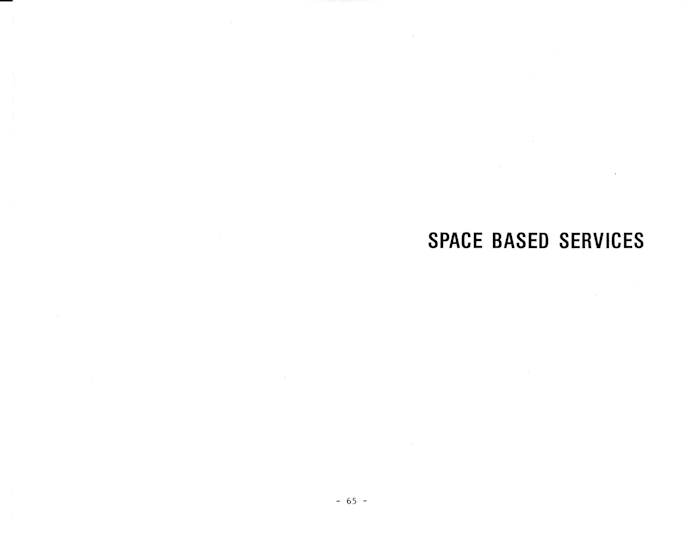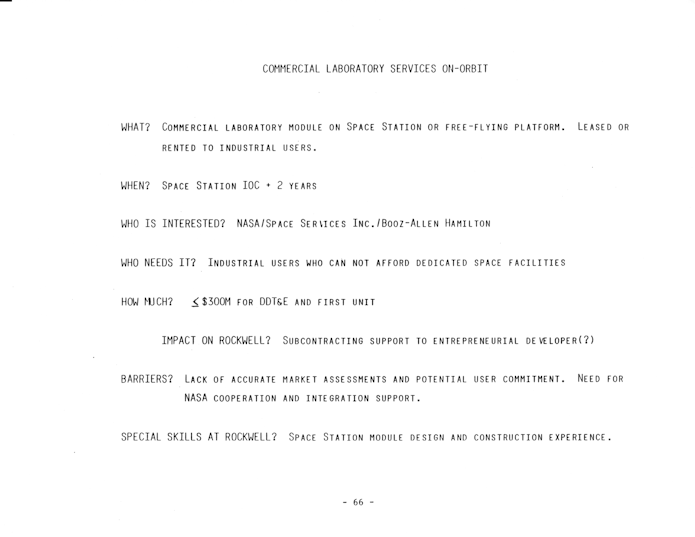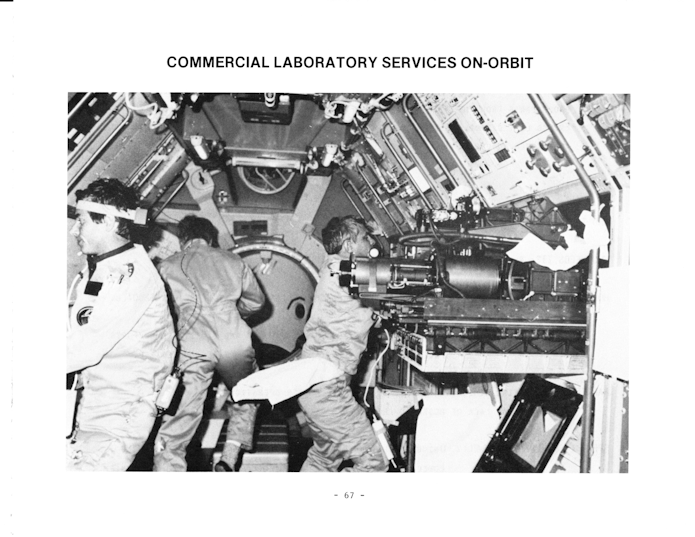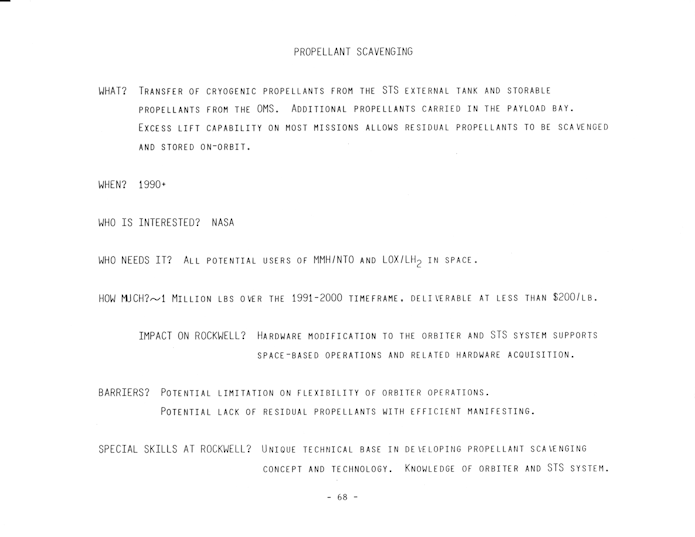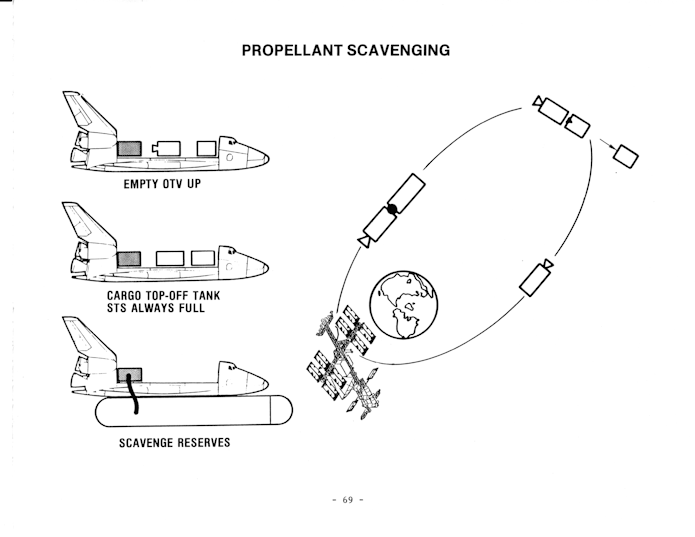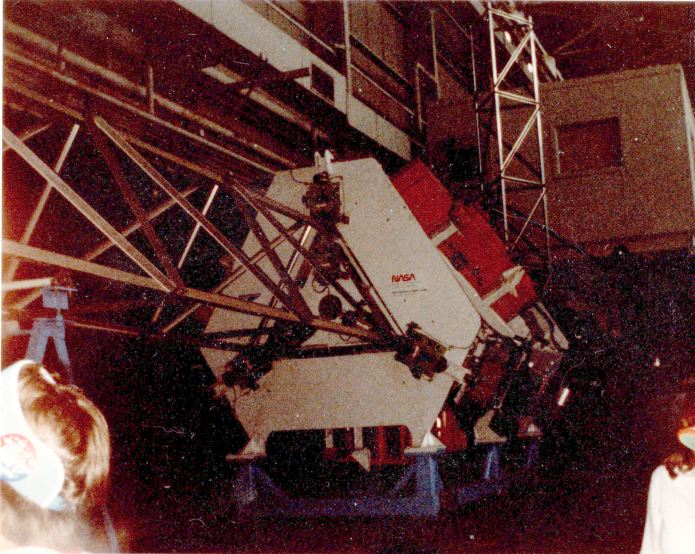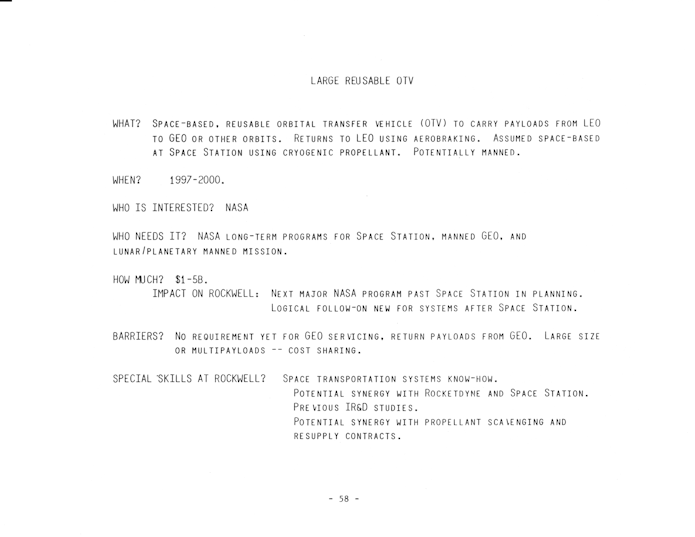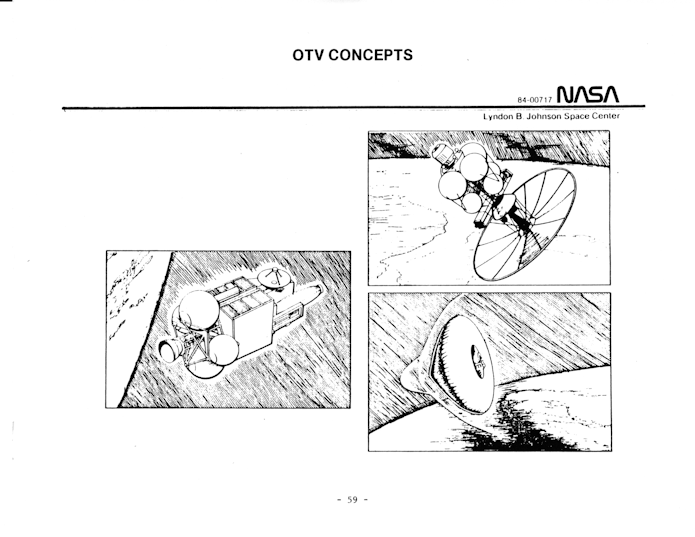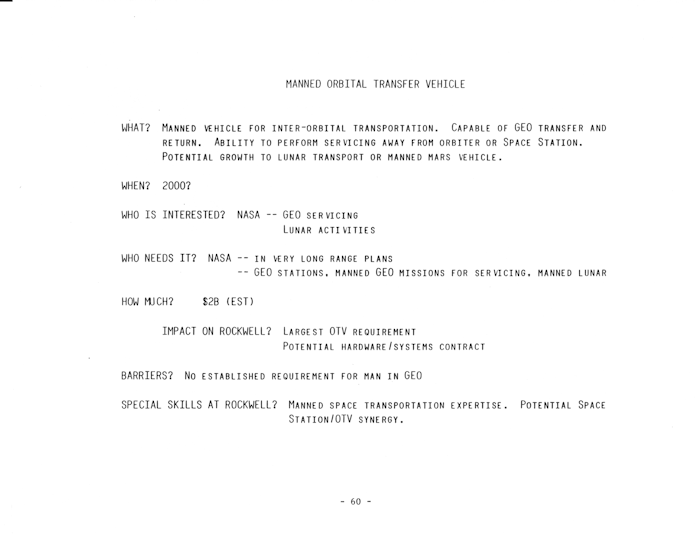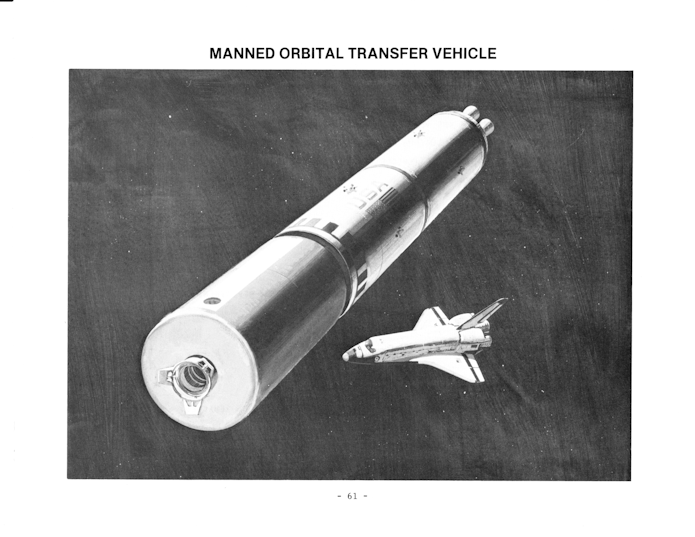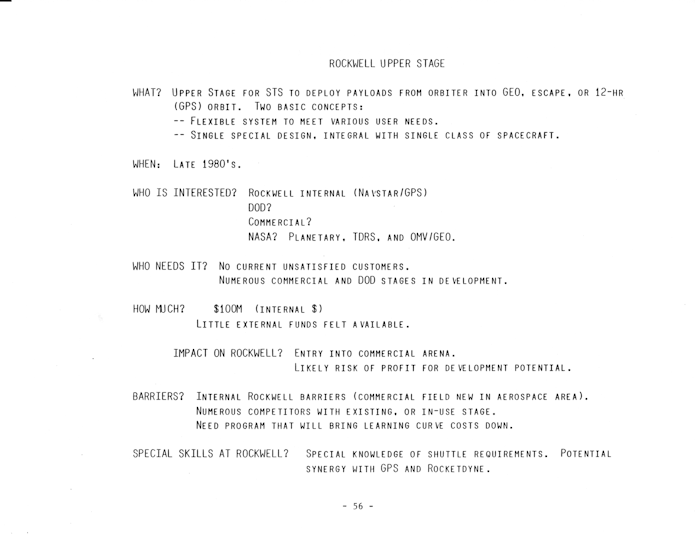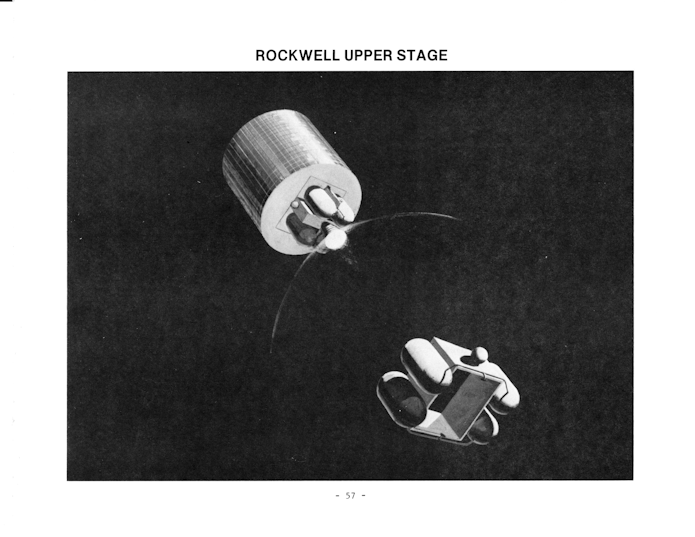A 1978 NASA artists impression (taken from ebay) depicting a “rescue ball” being used. This short-lived product was basically a space suit in spherical form, one that a Shuttle astronaut in shirt sleeves could enter relatively quickly in the event of an on-orbit disaster. Another Shuttle could send astronauts to collect the encapsulated and helpless astronauts and transfer them to a non-doomed shuttle. It was *kind* of a good idea, but once it was realized that the Shuttle takes *weeks* to prep for launch, the idea of using a Shuttle to rescue another Shuttle fell by the wayside. Instead of the crew of a stricken Shuttle relying on another Shuttle for rescue, official policy became la-la-la-I-can’t-hear-you and orbital rescue equipment became superfluous.
Here’s an article from “Future Life” magazine, May 1979, describing a Rockwell concept for a passenger module for the Shuttle. This could carry 74 passengers, a loadout that seems perhaps excessive until you realize that it was meant to transport the crews who would build the miles-long solar power satellites. If this concept is of interest, be sure to check out US Bomber Projects #06, the Solar Power Satellite Launch Special. There, another concept for a Shuttle “bus” was described and illustrated.
In 1985, Rockwell considered the possibility of making a business of returning commercial cargoes from orbit. This is a tricky proposition: almost *nothing* in space is worth more returned back to the ground. Humans, of course, and highly hypothetical products made in zero-g… drugs, crystals, electronics. but none of those actually panned out: zero-g and/or high vacuum might produce some small benefit for various chemical processes, but terrestrial manufacture is so much easier and cheaper that nothing has so far come from on-orbit production
The description mentions a “ballistic cargo carrier,” but the piece is illustrated with a lifting body. This appears to be the same vehicle mentioned previously as a “hypervelocity research vehicle.” I don’t know if this means Rockwell gave thought to using the HRV as a cargo return system (if so, it would be an inefficient way to go) or if the HRV diagram was simply conveniently at hand. A ballistic capsule would probably be by far the best way to go for returning payloads that are relatively insensitive to g-forces. Cheaper, smaller, lighter and, importantly, cheaper than a lifting body.
Next up: Space Station Lifeboats.
In 1985, Rockwell suggested that there might be profit in turning the Shuttle into a tanker for refueling/and servicing other spacecraft. At the same time they had the idea of a space-based “spare parts bin,” which was just what it sounds like. The former makes a great deal of sense, but the latter… not so much. Today, however, a similar idea would probably include buckets of raw metal powder and some form of zero-g 3D printer to fabricate the needed parts. Otherwise, the number of parts that would be needed to service even the smallest fraction of satellites in orbit would be vast.
Picking up where we left off…
In 1985, Rockwell considered the possibilities of space-based commercial services such as modules added to the Space Station or free-flying on their own and propellant scavenging from the External Tank and OMS pods. in the decades since, neither of these has come to pass. Commercial modules for the ISS have been proposed, but none flown, and certainly no free-flying man-tended commercial space facilities have been launched. Similarly, the idea of scavenging residual propellant is a good one… *IF* you can do it cost effectively. Every drop of rocket fuel returned to Earth is a waste of money and potential, along with being a potential environmental hazard when it’s inevitably just dumped into the atmosphere after re-entry or touchdown.
In the mad dash to collect what I needed for shipment (and for a time storage… there was, until a late development, the full expectation that I and my cats would spend a good long while as officially homeless), I looked through a great many things I had not examined in a long time, and wound up throwing a *lot*of it into the garbage. My college aerospace engineering homework? Garbage. The vast majority of the photos I took in my pre-digital days? Garbage. This was aided in the fact that the vast majority of those photos had found themselves under a leak in the shop roof and had been welded together into an undifferentiated brick of paper. But a few random, scattered photos were found more or less intact… and even then, most wound up in the garbage because, come on, they were little better than garbage when they were fresh from the developer.
A few that were deemed worthy of scanning were three taken when I was in Space Camp in 1983. The three, which are technically *really* *bad,* show a Grumman “beam builder” that we space tykes got to see at NASA-Marshall Space Flight Center. A device intended to by launched by the Shuttle, it would be fed rolls of aluminum “tape” and would bend, cut and weld them together into structural beams, sure just the thing that would be needed by the early 90’s at the latest to help build the solar power satellites, space station and early space habitats that would certainly be under construction by then.
As my damn near 40-year-gone memory suggests, we were told that the device on display was a *real* beam builder as opposed to a mockup. But I can’t be sure about that.
I’ve uploaded the three photos scanned at 600 dpi, including some modest “enhancements,” to the 2019-10 APR Extras folder at Dropbox available to all $4 and up APR Monthly Historical Document Program subscribers & Patrons. Is it great stuff? Nope. But what do you really expect from one of these kids?
It was in some doubt on my end, but I managed to get the October rewards issued in the nick of time. I have been uprooted and moved well over a thousand miles into smaller digs; much of my stuff was abandoned or outright tossed but my files seem, so far, to have survived the journey intact and hopefully complete. I’m in the process of straightening that all out now, and with luck November will be more orderly.
The October rewards included:
Diagram: A very large format scan of the McDonnell Douglas Model D-3235 Supersonic Transport from 1988
Documents: The Boeing “Airborne Alert Aircraft”
A new scan of the Goodyear “METEOR Junior” report, this time scanned from a pristine original
A scan of a collection of JPL CAD diagrams of a Pluto flyby spacecraft circa 1994… sent to me during my college days with the hopes that I could make a display model of it (beyond my capabilities at the time)
In lieu of the CAD diagram usually created for $5 and up Patrons, which I had nowhere near the time to create, a scan of some North American Rockwell brochures on the HOBOS homing bomb system.
If this sort of thing is of interest – either in receiving these sort of rewards or in helping to preserve this sort of aerospace history – consider signing up for the APR Monthly Historical Documents Program.
Continuing…
In 1985 Rockwell considered the business possibilities of a range of Orbital Transfer Vehicles. The OTV, in its various forms, was a reusable upper stage designed to move sizable payloads from LEO to higher orbits such s geosynchronous. To facilitate reusability, some designs included aerobrakes to reduce the need to burn fuel when returning from high orbit to low. Some OTVs included manned options. The men were not needed for piloting the OTVs, but to perform missions such as satellite servicing in GEO.
Continuing…
In 1985, the Space Shuttle program was already about a decade and a half old, the shuttles themselves were already starting to show themselves as “old tech.” It was clear that they would need replacing with a next generation of vehicle, and of course Rockwell wanted to build whatever “Shuttle II” came along… if for no other reason, a Shuttle II would make the Shuttle instantly obsolete and wipe out Rockwell’s Shuttle-based income. It was obvious that such a system would enter service sometime after the year 2000. Not, of course, very long after 2000. That would be nuts.
Interestingly, the illustration Rockwell used for the Next Generation Shuttle was not a Rockwell design, but a NASA-Langley concept for a small “Orbit-on-Demand” vehicle. If you’d like more information on this exact design, boy, have I got a deal for you: it was described and illustrated in US Launch Vehicles Projects #03.
